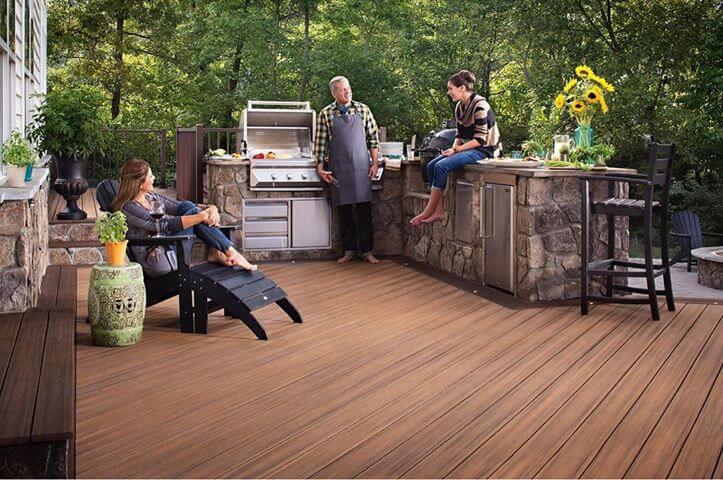Which one is right for you?
From allowing memorable outdoor gatherings with friends & family to accommodating nights of eating s’mores with the special one, your deck is a part of many plans including a choice of plants and sitting arrangements.
If you’re considering installing a new deck or refreshing the existing one, you may want to know more about the decking options available in the market. These days people are spoilt for choice when it comes to choosing decking materials. There are tons of options likely to overwhelm you in no time. Don’t worry! We’ve got you covered.
The following materials are the top two decking choices for the majority of residential decking projects.
Composite Decking
Homeowners often choose composite decking over timber decking for its low-maintenance benefits, durability, and wide range of colours & textures.
Check out some more benefits of choosing composite decking.
Sustainability
Most composite decking products are manufactured using a combination of recycled plastic and sustainably sourced timber fibre, making it a good environmental choice. Besides having excellent green credentials, composite decking products are designed to look and feel like natural timber making them aesthetically pleasing.
Colour & Design Aesthetics
Composite decking is available in a wide array of colours ranging from lighter shades and natural colours to darker tones. Depending on the overall design aesthetics and your personal preference, you can choose from various textures like woodgrain embossing to sanded and smooth surfaces that’ll complement other building products and help you achieve a great look, or you can simply get a red couch and get all teh attention.
These sleek and modern-looking decking boards are also typically faster and easier to install.
Low-Maintenance
One of the major benefits of choosing composite decking is that you will spend limited time on maintenance and more time enjoying your outdoor living space. Once installed, composite decking will generally maintain its look and feel for years to come. The only maintenance required will be a quick wash & clean from month to month.
When choosing the material for your deck, consider how long materials last and which material can best endure general wear and tear, as well as harsh weather conditions. Composite decking boards are generally suited to all types of Australian weather conditions, and they don’t cup, warp, and splinter, making them perfect for families with pets & children.
Hardwood Decking
Many homeowners believe that the natural look & feel of solid timber is unmatched. Well, that is true! Although many composite decking boards try to mirror the appearance of natural wood, the quality and characteristics of the real product are beyond compare. Solid wood not only offers style and sophistication but also increases the value of your property over time.
Hardwood decks have many benefits such as unparalleled aesthetics, but they can be expensive and hard to maintain. Both natural softwood & hardwood come with their set of challenges. However, before we jump on to challenges, let us first explore some amazing benefits of natural timber.
The native Australian hardwood comes from the public forests in New South Wales, Queensland, Tasmania, Victoria, and Western Australia. This natural wood provides organic warmth, softness, and tactility that no other decking material can match. They exude natural beauty and can endure decades of use.
Natural wood doesn’t require extra embellishments. It is naturally vibrant, beautiful, and attractive. Because of its natural beauty, there won’t be a need to enhance your garden or backyard’s aesthetics. The wood will do the job for you! However, wood must always be maintained and cared for. If not maintained regularly, it can rot over time and become susceptible to splitting, cracking, and discoloration.
Hardwood decking is also likely to bleed tannin. Tannins are one of the many natural extractives present in the timber. They’re water-soluble and are released from the timber upon getting wet. To avoid this, you’ll need to use tannin blocking primers or pre-coat the timber before installation.
Now that we have listed the pros and cons of both these materials, you can confidently decide which products suit your expectations. Your deck is the foundation of your home exterior and so choosing a material that looks elegant and cohesive at the same time is very important. We recommend you make a choice that is practical for you and suitable for your house.

